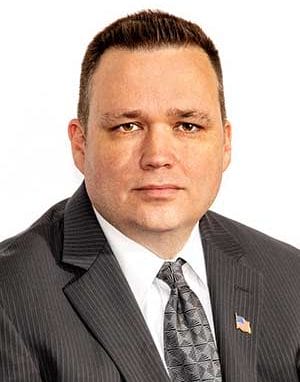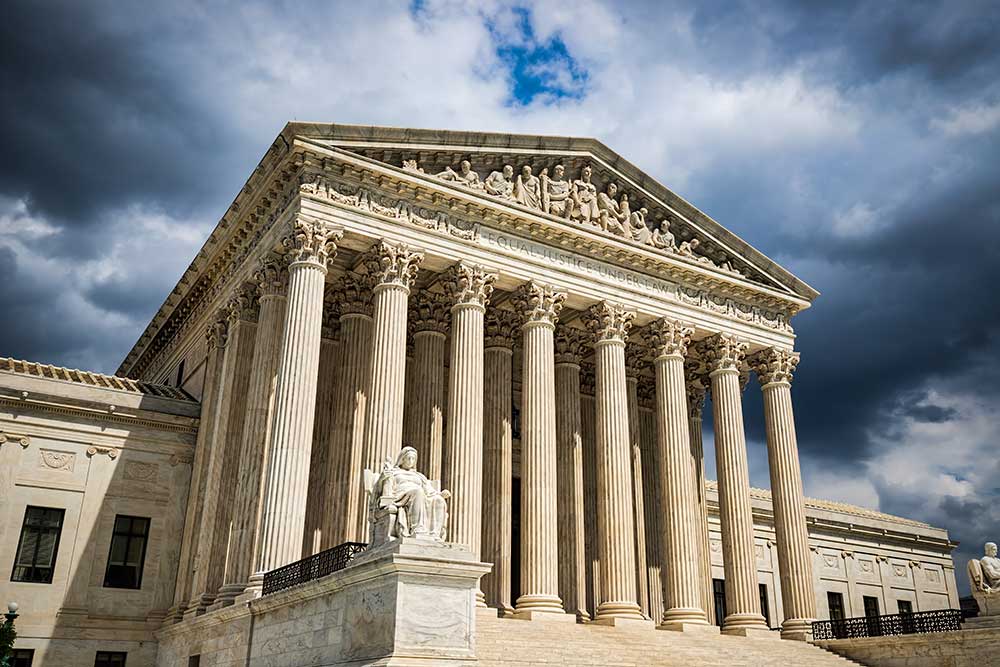Immediately, the Supreme Courtroom heard oral arguments that may decide the legality of firms promoting unfinished frames that assist Individuals make privately manufactured firearms (PMF).
The case, Vanderstok v. Garland, was introduced within the Northern District of Texas by the Firearms Coverage Coalition and Blackhawk Manufacturing Group (d/b/a 80 P.c Arms)after the Bureau of Alcohol, Tobacco, Firearms and Explosives (ATF) carried out guidelines that reclassified incomplete unserialized frames as firearms, reversing a few years of ATF opinion letters. The change after President Joe Biden ordered the ATF to vary the principles after he was unsuccessful in getting a invoice to ban what he known as “ghost weapons.”
A Federal District Courtroom choose knocked down the regulation, stating that the ATF violated the Administrative Procedures Act (APA). The federal authorities would then attraction to america Fifth Circuit of Appeals. The defendants argued that the decrease courtroom made the choice incorrect and that the ATF was inside its authority to vary rules. They claimed these firearms are resulting in an “epidemic of gun violence” though federal stats mix the variety of crimes dedicated with PFMs with the quantity dedicated with weapons with obliterated serial numbers.
The Fifth Circuit sided with the decrease courtroom and upheld the District Courtroom’s resolution. The federal authorities would ask the Supreme Courtroom to remain the Fifth Circuit’s resolution to enjoin the ATF from imposing the rule. SCOTUS would grant the ATF an administrative keep on the injunction till the federal government may file for a writ of certiorari with the excessive courtroom. The Supreme Courtroom would grant cert, that means they selected to overview the case.
For the reason that rule was handed, SCOTUS has selected two main circumstances that immediately affected the ATF’s rule-making potential. The primary case was Cargill. That case was additionally from the Fifth Circuit Courtroom of Appeals. It handled the ATF making a rule reclassifying bump shares as machine weapons. The ATF used lots of the similar causes to say it had the facility to make guidelines with the drive of regulation, successfully bypassing Congress. SCOTUS dominated by a 6-3 margin that the bump inventory rule violated the APA, and the ATF exceeded its authority.
Loper Vivid Enterprises is the second Supreme Courtroom case that may affect the Vanderstok case. That case handled Chevron deference. Chevron acknowledged that if a regulation is unclear, the regulatory company will get to find out what the regulation means. In Loper Vivid Enterprises, SCOTUS struck down Chevron, eradicating one of many ATF’s weapons to defend its guidelines.
The ATF began by arguing that it didn’t change the statutory definition of a firearm. The ATF claimed that this stuff are readily convertible. The federal government lawyer contended that the rule was wanted as a result of firms offered unfinished frames with jigs and drill bits. Justice Samual Alito appeared uncertain of the federal government’s argument and requested if a pen and a chunk of paper must be thought-about a grocery checklist.
Justice Neil Gorsuch requested concerning the ATF’s classification of the unfinished frames as firearms. The ATF pushed again, stating they had been firearms as a result of the frames had been readily convertible. Gorsuch pushed again by asking concerning the ATF’s submitting in a Syracuse, New York case the place the ATF acknowledged that an unfinished body wasn’t a firearm. The federal government mentioned the respondents misinterpret the submitting. Gorsuch didn’t appear satisfied.
Justice Alito requested about what sort of time it makes one thing readily transformed. The ATF acknowledged that the longest time for one thing to be readily convertible is eight hours. Alito didn’t appear to agree with the ATF, and that bodes properly for gun homeowners.
Decide Elena Kagan requested if the rule affected gun smiths’ shopping for firearm components. The defendant acknowledged that gun smiths wouldn’t be affected. The ATF mentioned they’re solely focusing on “fringe distributors.” The lawyer famous that it solely stops firms from promoting objects that individuals can use to create firearms by utilizing instruments akin to canine grooming merchandise.
Justice Brett Kavanaugh acknowledged that he’s anxious about increasing the prison statute. The ATF mentioned that if an individual was unaware of the regulation, they might not be criminally charged. Kavanaugh pushed again and requested a few attainable cost for not working background checks. The ATF admitted that the individual may nonetheless be arrested and prosecuted for failing to run the background verify.
Justice Amy Comey Barrett requested the ATF since AR15s could possibly be readily convertible to machine weapons by drilling a single gap ought to individuals be involved that the ATF would possibly attempt to regulate AR15s as machine weapons. The ATF mentioned since an AR15 is a stand-alone merchandise that, the ATF would by no means classify an AR15 as a machine gun.
Justice Ketanji Brown Jackson was involved that the courts had been making an attempt to overrule the federal government company’s authority. The ATF agreed with Justice Jackson. As a substitute of asking questions, Jackson went right into a monolog as to why the ATF has the facility to manage unfinished frames. It appeared like she was advocating the return of Chevron deference. The ATF acknowledged {that a} facial problem may solely be made if the regulation conflicts with the Gun Management Act of 1968 and believes the rule falls properly throughout the regulation.
Justice Clarence Thomas requested concerning the 80% rule. The plaintiff highlighted that “80%” is barely a colloquial time period. The plaintiffs mentioned the regulation says to take a look at the merchandise, not the abstract of components. Justice Thomas appeared open to the plaintiff’s concepts. It appeared clear as to which manner he would vote.
Justice Sonia Sotomayor appeared hostile in direction of the plaintiffs. She requested if eradicating a single plastic tab would exempt an unfinished body from being a firearm. The plaintiffs mentioned the kits are in the marketplace and want way more achieved than simply eradicating a tab. She didn’t appear joyful concerning the response.
Justice John Roberts requested concerning the ATF’s essential machining operations take a look at to the plaintiffs. The plaintiffs mentioned the essential machining operations take a look at says it isn’t a completed body till the ultimate gap is no less than listed. Justice Roberts appeared to be on the fence about how he’ll vote. He or Barrett could possibly be the deciding vote.
Of their rebuttal, attorneys for the ATF closed by stating the one objective of a “ghost gun” is for use for nefarious functions. The ATF’s lawyer dismissed plaintiffs’ claims that hobbyists purchase these merchandise to construct their very own firearms. She mentioned the main gun producers not suing the ATF over unfinished frames reveals the prison component within the DIY gun business, though the overwhelming majority of builders are law-abiding residents. One of many plaintiffs, 80 P.c Arms, gave AmmoLand Information an announcement.
“We’ve stood on the entrance strains of this struggle as a result of it’s about extra than simply stopping flawed rules—it’s about defending the basic freedoms that the Structure ensures,” 80 P.c Arms mentioned in a launched assertion to AmmoLand Information. “If the ATF’s overreach is allowed to face, it may result in much more aggressive makes an attempt to limit your rights. Even the federal government’s personal current letter to the Courtroom signifies they know this case isn’t as clear-cut as they need you to consider.”
The Courtroom won’t reveal the choice for just a few extra months. If previous circumstances are any indication, the ATF rule on unfinished frames could be on its deathbed. The choice will trip on Justice Barrett and Justice Roberts opinion. If the body rule fails, the demise of the pistol brace rule won’t be far behind.
About John Crump
Mr. Crump is an NRA teacher and a constitutional activist. John has written about firearms, interviewed individuals from all walks of life, and on the Structure. John lives in Northern Virginia together with his spouse and sons, observe him on X at @crumpyss, or at www.crumpy.com.






















